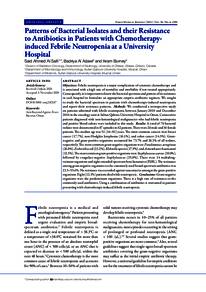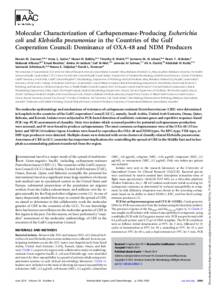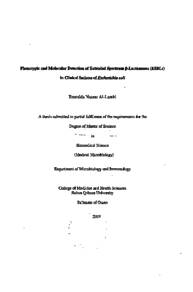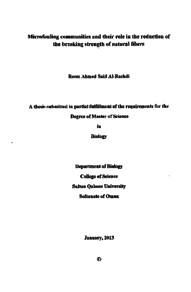Document
Patterns of bacterial isolates and their resistance to antibiotics in patients with chemotherapyinduced febrile neutropenia at a university hospital.
Identifier
DOI 10.5001/omj.2021.87
Contributors
Al-Adawiyah, Badriya., Author
Burney, Ikram A., Author
Publisher
Oman Medical Specialty Board.
Gregorian
2021-07
Language
English
Subject
English abstract
Objectives: Febrile neutropenia is a major complication of cytotoxic chemotherapy and is associated with a high rate of mortality and morbidity if not treated appropriately. Consequently, it is important to know the bacterial spectrum and pattern of its resistance in each hospital to formulate an appropriate empiric antibiotic regimen. We sought to study the bacterial spectrum in patients with chemotherapy-induced neutropenia and report their resistance patterns. Methods: We conducted a retrospective study on patients admitted with febrile neutropenia between January 2010 and December 2016 in the oncology unit at Sultan Qaboos University Hospital in Oman. Consecutive patients diagnosed with non-hematological malignancies who had febrile neutropenia and positive blood culture were included in this study. Results: A total of 76 bacterial isolates were documented in 67 episodes in 62 patients. There were 26 male and 36 female patients. The median age was 51 (14–81) years. The most common cancers were breast cancer (17.7%), non-Hodgkin lymphoma (16.1%), and colon cancer (14.5%). Gram-negative and gram-positive organisms accounted for 73.7% and 26.3% of all isolates, respectively. The most common gram-negative organisms were Pseudomonas aeruginosa (26.8%), Escherichia coli (23.2%), Klebsiella species (17.9%), and Acinetobacter baumannii (12.5%). The most common gram-positive organisms were Staphylococcus aureus (30.0%), followed by coagulase-negative Staphylococcus (25.0%). There were 14 multidrug-resistant organisms and eight extended-spectrum beta-lactamases (ESBL). The resistance among gram-negative organisms to the commonly used broad-spectrum antibiotics was 23.5–55.6%. No resistance was recorded against vancomycin amongst the gram-positive organisms. Eight (12.1%) patients died while neutropenic. Conclusions: Gram-negative organisms were the predominant organisms. There is a high rate of resistance to the commonly used antibiotics. Using a combination of antibiotics is warranted in patients presenting with chemotherapy-induced febrile neutropenia.
Member of
Resource URL
Citation
Al-Saifi, Said Ahmed, Al-Adawiyah, Badriya, & Burney, Ikram A. (2021). Patterns of bacterial isolates and their resistance to antibiotics in patients with chemotherapyinduced febrile neutropenia at a university hospital. Oman Medical Journal, 36 (4), e290
Category
Journal articles







